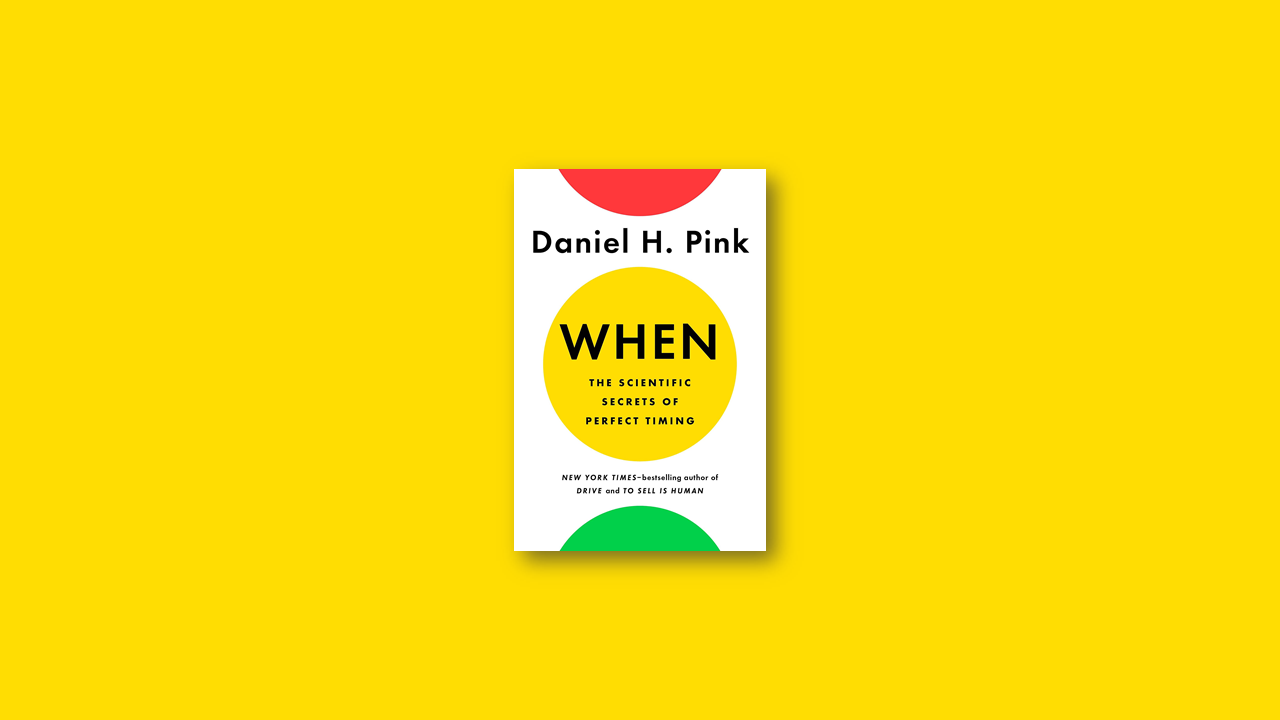The hidden pattern of everyday life
Study shows the language of Twitter users felt active, engaged and hopeful in the morning, plummeted in the afternoon and rebounded in the early evening. Same way judges are more likely to issue a favorable ruling in the morning than in afternoon. So schedule important meetings early in the day.
Our moods and performance oscillate during the day. For most, mood follows a common pattern: Peak (mornings) – Trough (afternoons) – Rebound (evenings).
Most of us excel analytic work that requires sharpness, vigilance and focus in the peak, but we’re better on insight work that requires inhibition and resolve in the rebound.
Your better morning routine
Water – Coffee – Sun – Self-talk
- Drink a glass of water as you wake up
- Avoid coffee immediately after you wake up
- Soak up the morning sun
- Schedule talk-therapy appointments for the morning
Your afternoon restorative breaks
Move – Social – Outside – Detach
- Moving beats stationary – 5 minute walks to boost energy and focus
- Social beats solo – talk with coworkers about something other than work
- Outside beats inside – walk outdoors
- Fully detached beats semi-detached – take tech-free breaks
- Something beats nothing – work for 52 minutes then break for 17 minutes
Lunch is the most important meal of the day
Two key ingredients of powerful lunch are
- Autonomy (control over your meal)
- Detachment (separation from distractions)
Your ideal nap
Coffee-then-nap. Otherwise known as the nappuchino.
The ideal nap is the nappuchino followed by 10-20 minutes, no longer. Ideal time is between 2pm and 3pm. If you nap longer, you will wake groggy and will take time to recover.
Your flash break
Set a timer, every 20 minutes look at something 20 feet away for 20 seconds, known as 20-20-20 rule.
Starting right
4 situations you should go first
- If you’re on a ballot (prom queen, the Oscars…) being listed first give you an edge
- If you’re not the default choice – going first can get a fresh look from decision-makers
- There’re relatively few competitors (<5), take advantage of ‘primacy effect’ the tendency for people to remember first thing in a series better than that come later.
- You’re interview for a job and you’re up against several strong candidates, you might gain an edge from being first.
4 situations you should NOT go first
- You’re the default choice.
- There’re many competitors (not necessarily strong ones, just a large number), going later can confer a small advantage and going last can confer a huge one.
- You’re operating in an uncertain environment.
- Competition is meager, going last can highlight your differences.
Starting again – Turning troughs around
- Happiness climbs high early in adulthood and begins to slide downward in late 30s and early 40s, dipping to a low in 50s. But we recover quickly from this slump later in life.
- If you’re getting stuck in midway (a project or mid-life crisis) picture someone who’ll benefit from your efforts.
- Research found that home teams with a 1-point deficit at halftime won more than 58% of the time. Merely telling people they’re slightly behind an opponent can lead them to exert more effort.
Start strong, finish stronger
At the beginning, we’re more motivated by how far we’ve progressed. At the end, we’re more so by trying to close the gap that remains. Research suggests someone who’s 49 is about 3 times more likely to run a marathon than who’s 48.
‘End of life’ bias suggests we believe people’s true selves are revealed at the end – even if their death is unexpected and the bulk of their lives displayed a far different self.
When we remember an event, we assign greatest weigh to its most intense moment (peak) and how it culminates (end). We downplay how long an event lasts and magnify what happens at the end (duration neglect). Recommended Reading: The Power of Moments by Chip & Dan Heath
Big ends don’t leave us happy, rather they produce something richer – a rush of unexpected insight, a fleeting moment of transcendence. Poignancy: adding a small component of sadness, to an otherwise happy moment elevates that moment rather than diminishes it (endings like Disney’s Up, Big Hero, Toy Story 3).
When to quit your job
If you answer 2 or more no and considering quitting your job:
- Do you want to be in this job on your next anniversary?
- Is your current job both demanding and in your control?
- Does your boss allow you to do your best work?
- Are you outside the 3-5 year salary bump window?
- Does your daily work align with the long-term goals?
Secrets of Group Timing
Coordinating with others also makes us do good – and doing good enhances synchronization (e.g. singing in a group has many physical and mental benefits).
Groups must synchronize on 3 levels – to the boss, to the tribe and to the heart. Group timing requires a boss – someone or something to set the pace and focus the collective mind. After individuals sync to the boss, they must sync to the tribe. That requires a sense of belonging.
Recommended Reading: The Culture Code by Daniel Coyle

